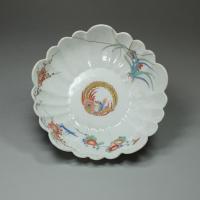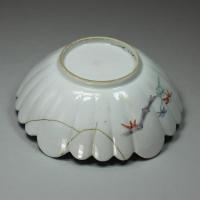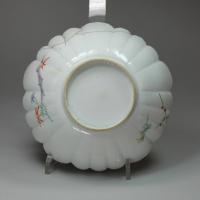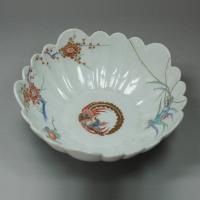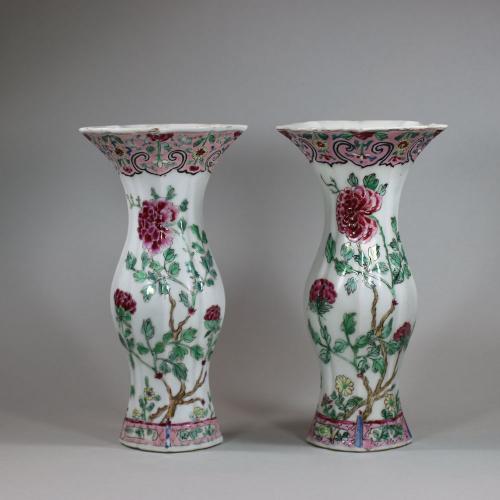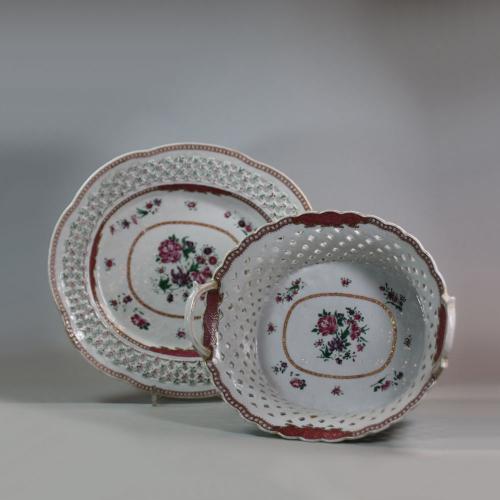
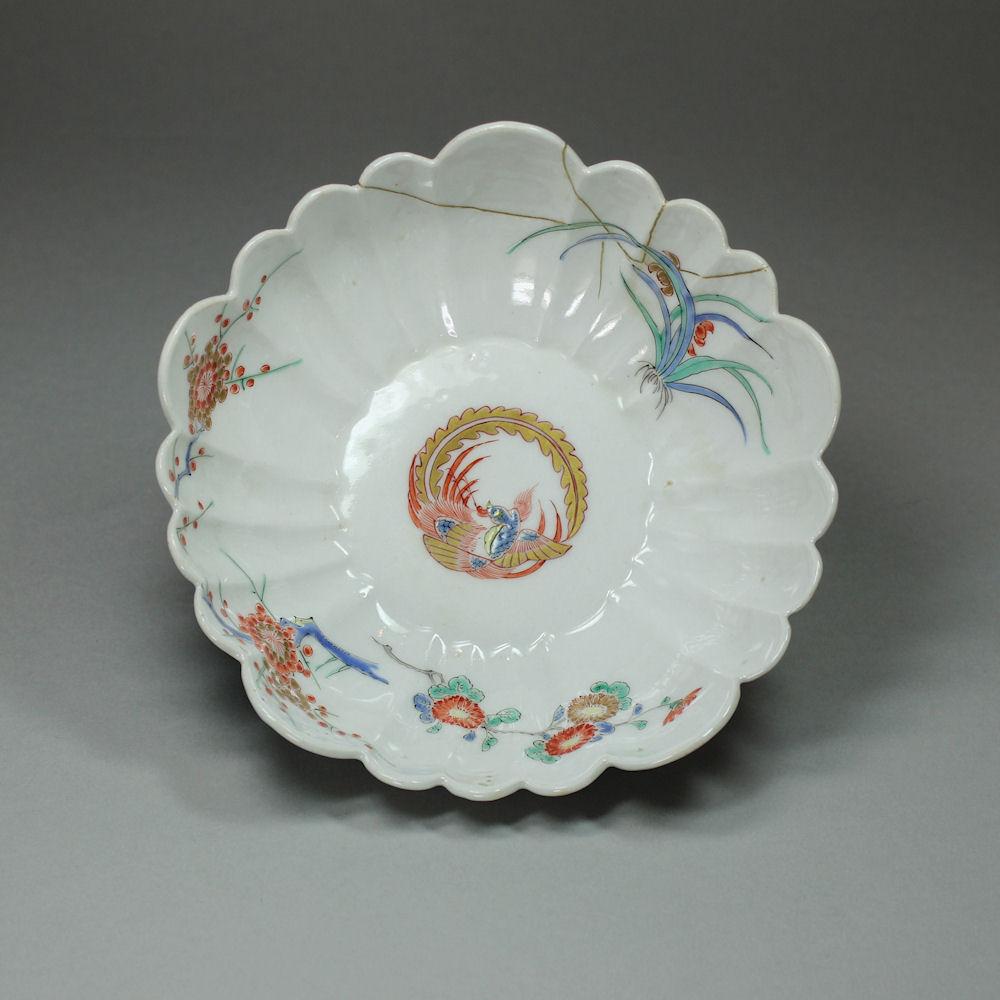
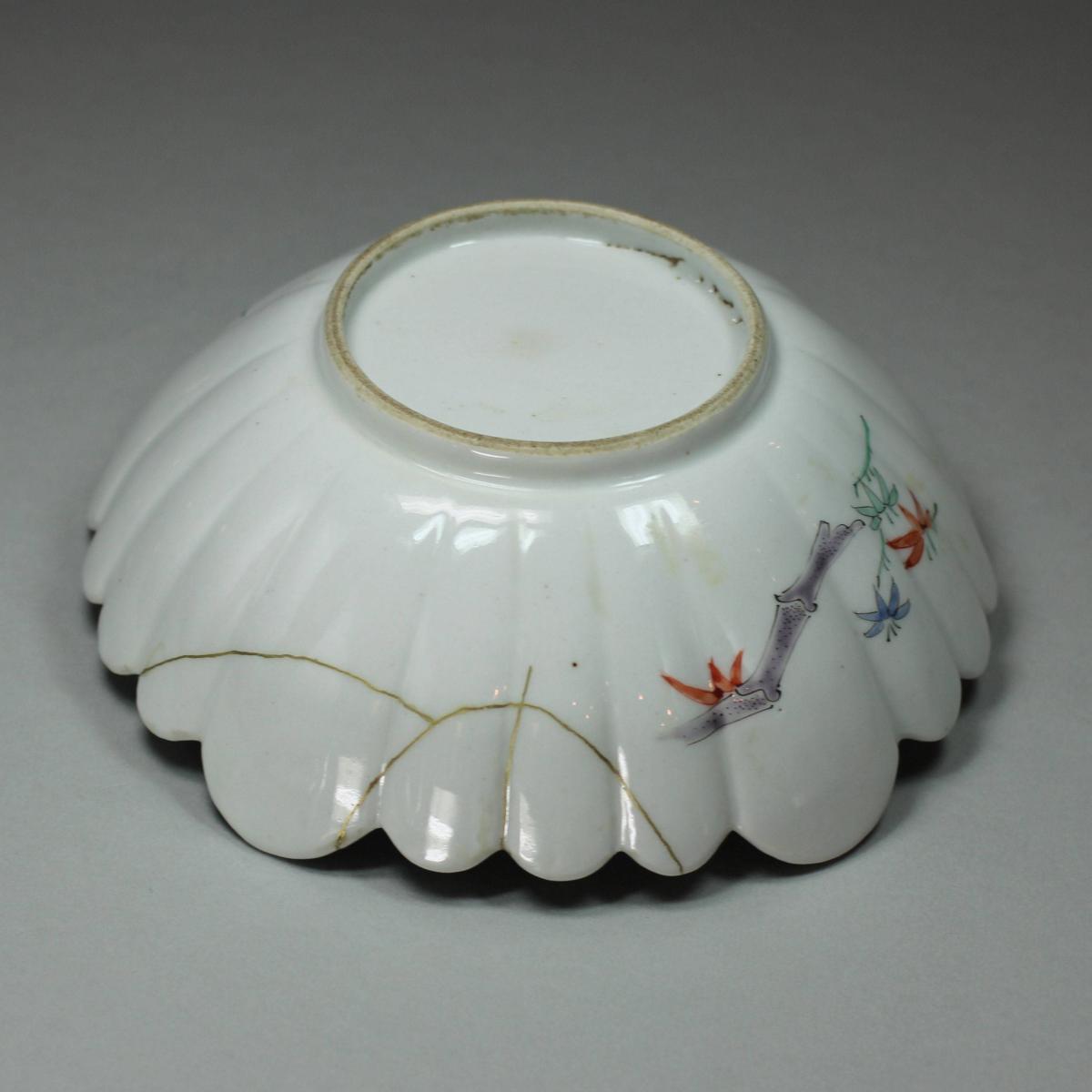
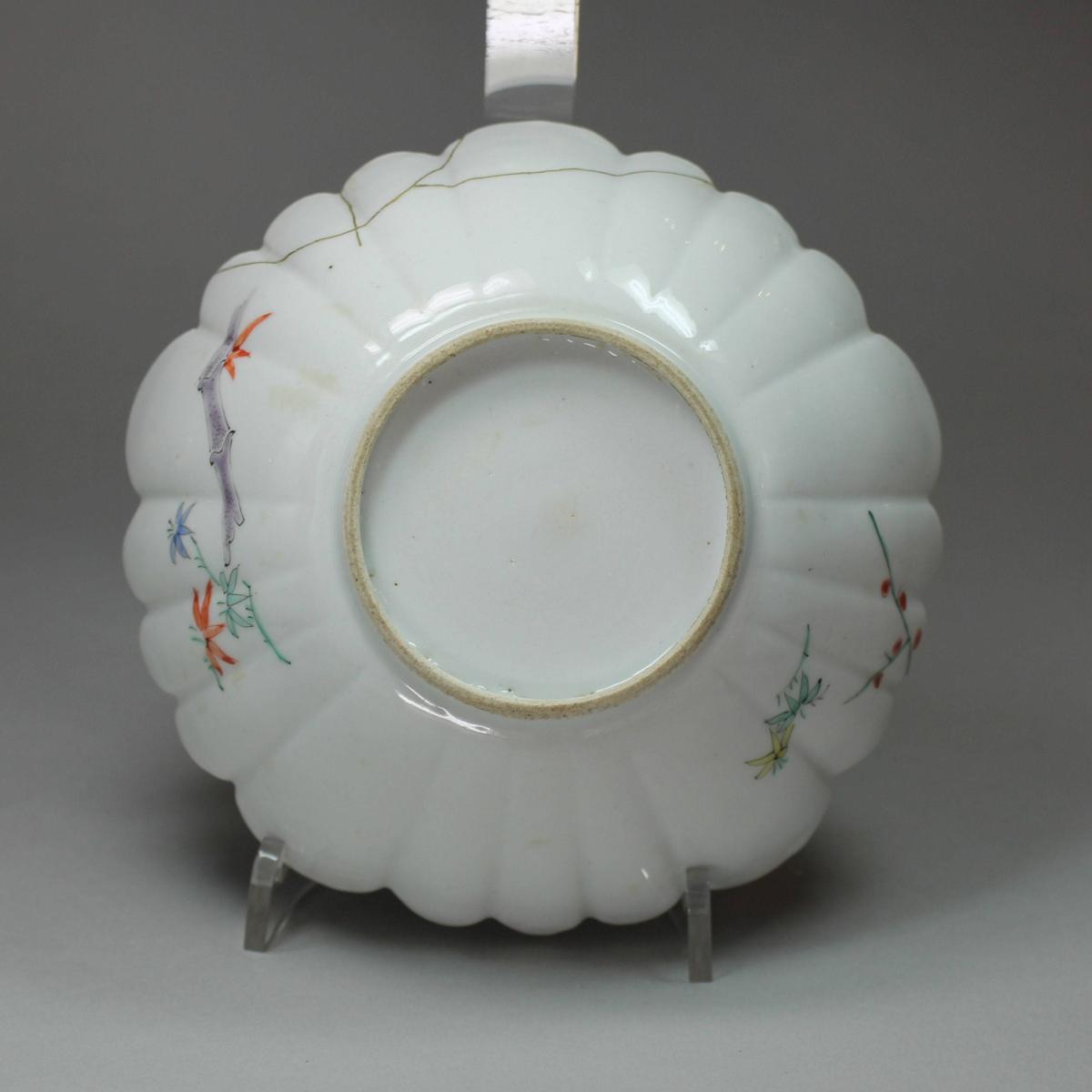
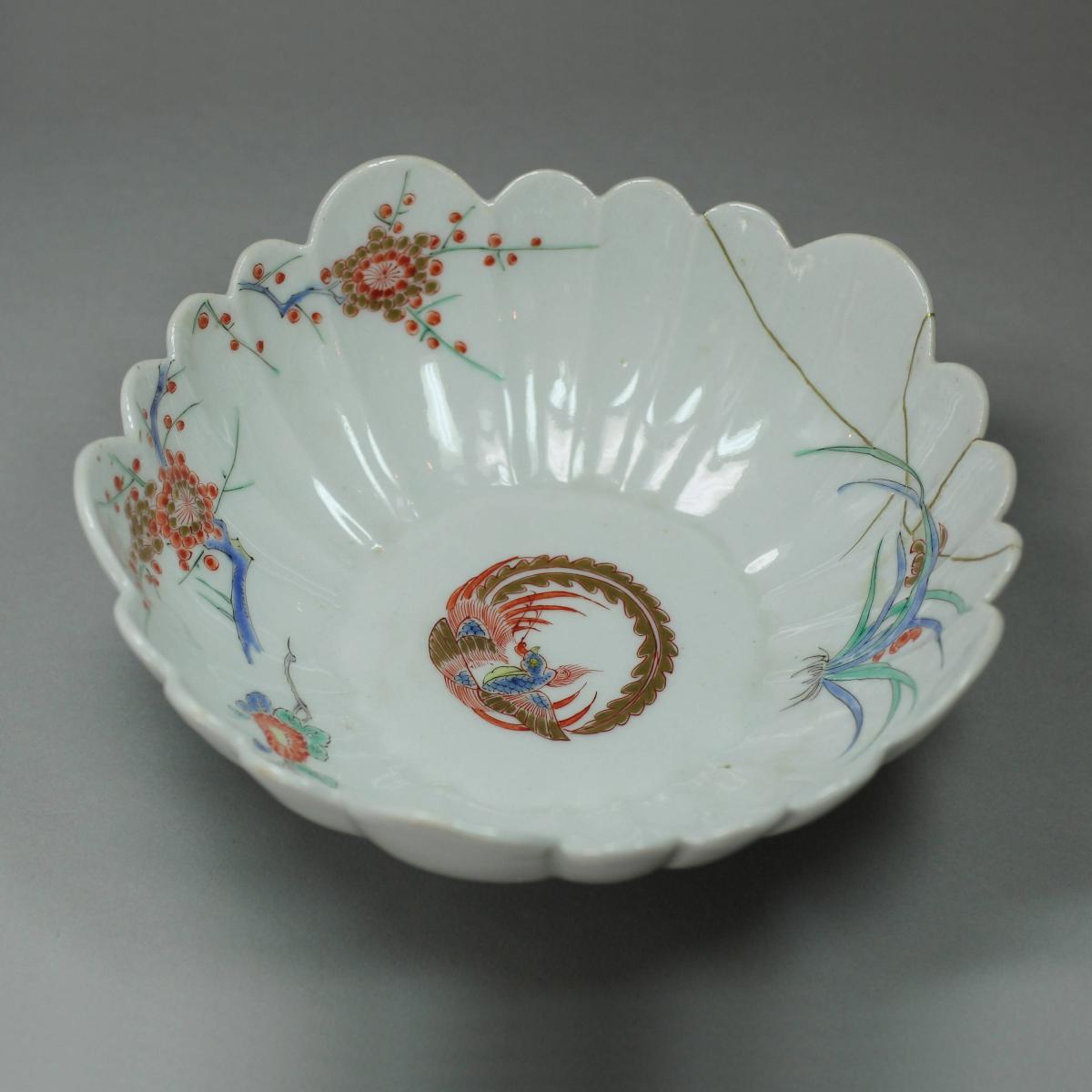
Price on application
This object is eligible for a Certificate of BADA Provenance
The BADA Standard
- Since 1918, BADA has been the leading association for the antiques and fine art trade
- Members are elected for their knowledge, integrity and quality of stock
- Our clients are protected by BADA’s code of conduct
- Our dealers’ membership is reviewed and renewed annually
- Bada.org is a non-profit site: clients deal directly with members and they pay no hidden fees
Japanese kakiemon fluted bowl, 18th century, with a central phoenix roundel, the lobed sides decorated with sprouting grasses and three stylised flowering boughs; the reverse with sprays of bamboo and prunus.
Diameter: 14.5cm. (5 3/4in.)
Condition: Pieces out of rim and neatly re-stuck
The Japanese phoenix (鳳凰, hō-o), is often referred to in Japan as a ‘Chinese phoenix’ as it originated in China before being transmitted to Japan, most likely during the Asuka Period (538–710 C.E.). It shares some of its symbolism with its Chinese counterpart. In ancient China, the ‘fenghuang’ had consisted of two separate entities to represent yin and yang; the male bird (鳳, feng) and female (凰 huang), but during the Ming the two gradually merged to become the symbol of female royalty. In Japan the phoenix represents renewal of life and the balancing of opposites, and has long been associated with the Imperial Family (indeed, it features on the Imperial throne and is can also be found on the 10,000 yen note). Usually depicted as a magnificent beast with brilliant plumage and sometimes with the neck of a snake and a tortoise-like back, it has been a popular decorative motif in Japanese art since at least the Nara period, and features heavily in Japanese art, including ceramic, lacquer and textile design, throughout its long and varied history. Several extant examples of early architecture feature the hō-o, perhaps most notably the ceiling of the Western Gate of the Main Hall at the Houryūji temple complex in Nara, the oldest parts of which date back to the 7th century. Initially, designs incorporating the phoenix seem to have retained a strong connection to the symbol’s Chinese origins, with the bird often shown perching in a paulownia (a tree native to China) or amongst the arabesque pattern known as karakusa (唐草 literally, ‘Chinese grasses’). However, over time artists began to replace these ‘Chinese’ motifs with seasonal ‘Japanese’ ones such as wild grasses, peony, chrysanthemum and prunus, as seen on this Kakiemon example, reflecting the entrenchment of the phoenix in Japanese iconography.
Dimensions
Diameter: 5 3/4in. 14.5cmCondition report
Pieces out of rim and neatly re-stuck.Stock number
V191The BADA Standard
- Since 1918, BADA has been the leading association for the antiques and fine art trade
- Members are elected for their knowledge, integrity and quality of stock
- Our clients are protected by BADA’s code of conduct
- Our dealers’ membership is reviewed and renewed annually
- Bada.org is a non-profit site: clients deal directly with members and they pay no hidden fees


